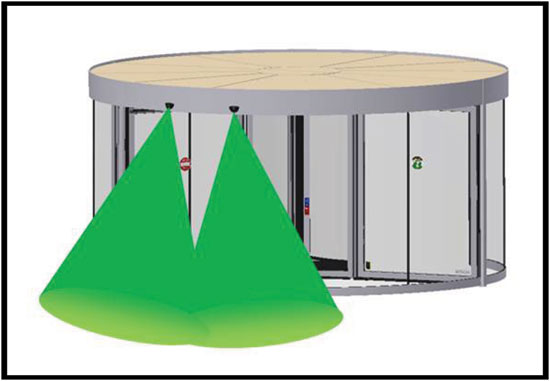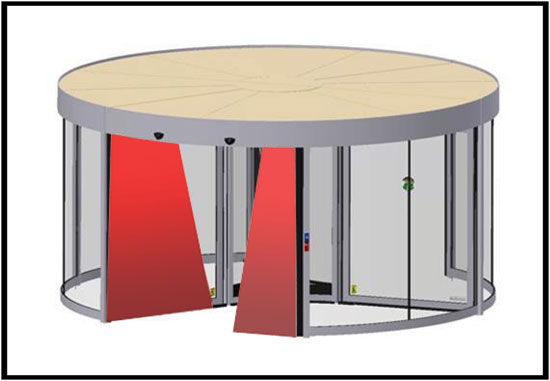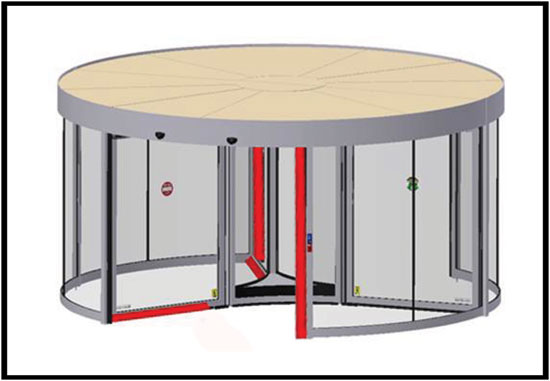The Ins and Outs of Revolving Doors
Code Requirements for User Comfort and Safety
A 1942 fire at the Cocoanut Grove, Boston's premier nightclub during that time, sparked modern code stipulations governing revolving doors. In the deadliest nightclub fire in history, Cocoanut Grove visitors panicked, attempting to exit through the main entrance—a single revolving door. In the chaos, people were trapped in and around the door, requiring firefighters to dismantle it to gain access to the building. Later fire laws made it illegal to have only one revolving door as a main entrance without being flanked by outward opening doors, or revolving doors had to have the ability to “bookfold” their door wings in emergency situations, enabling a wider egress path.
Today, national standards for the comfort and safety of revolving doors are found in ANSI 156.27, the American National Standard for Power and Manual Operated Revolving Pedestrian Doors. This standard stipulates requirements for power operated revolving doors, which rotate automatically when approached by pedestrians and/or small vehicular traffic, and manual revolving type doors for pedestrians. The objective is to provide performance standards and provisions to reduce the chance of user injury and entrapment. ANSI Code requirements set maximum RPM allowances for two-, three- and four-wing automatic doors for safety, as well as speed control for manual doors, and required safety sensors that, when activated, cause the door to slow down or stop. The standard does not pertain to revolving doors for industrial or trained traffic or custom installation.
For manual doors a required speed control device limits the doors' rotation speed. Further, collapsible door wings are required for emergency egress as is a minimum clearance between door wings and curved sidewalls to protect hands from getting trapped.
Automatic revolving door speeds are controlled by motor gear drive assemblies and electronic sensors play an integral role in their operation. Initially, a presence detection sensor at the throat opening must be installed to start rotation of the door as users approach the door. The remaining sensors inside the door are safety sensors used to prevent unintended contact with the door. There are two types of safety sensors required for automatic doors, one as a back-up to the first. Infrared presence detectors are required at the door wing, mounted on the top rail, and ceiling mounted at the throat opening. Should the infrared sensors fail, the required rubber contact switches—both door-wing mounted on the bottom rail and side wall-mounted at the throat opening—will act as backup, redundant and overlapping to the infrared sensors, should they fail.

Image courtesy of Boon Edam
Motion sensors in front of the throat opening are used to begin rotation of the door when a user approaches.

Image courtesy of Boon Edam
Infrared safety sensors on the top rail and right side of the throat opening prevent contact with users or objects.

Image courtesy of Boon Edam
Rubber contact switches are redundant methods of stopping the door.









